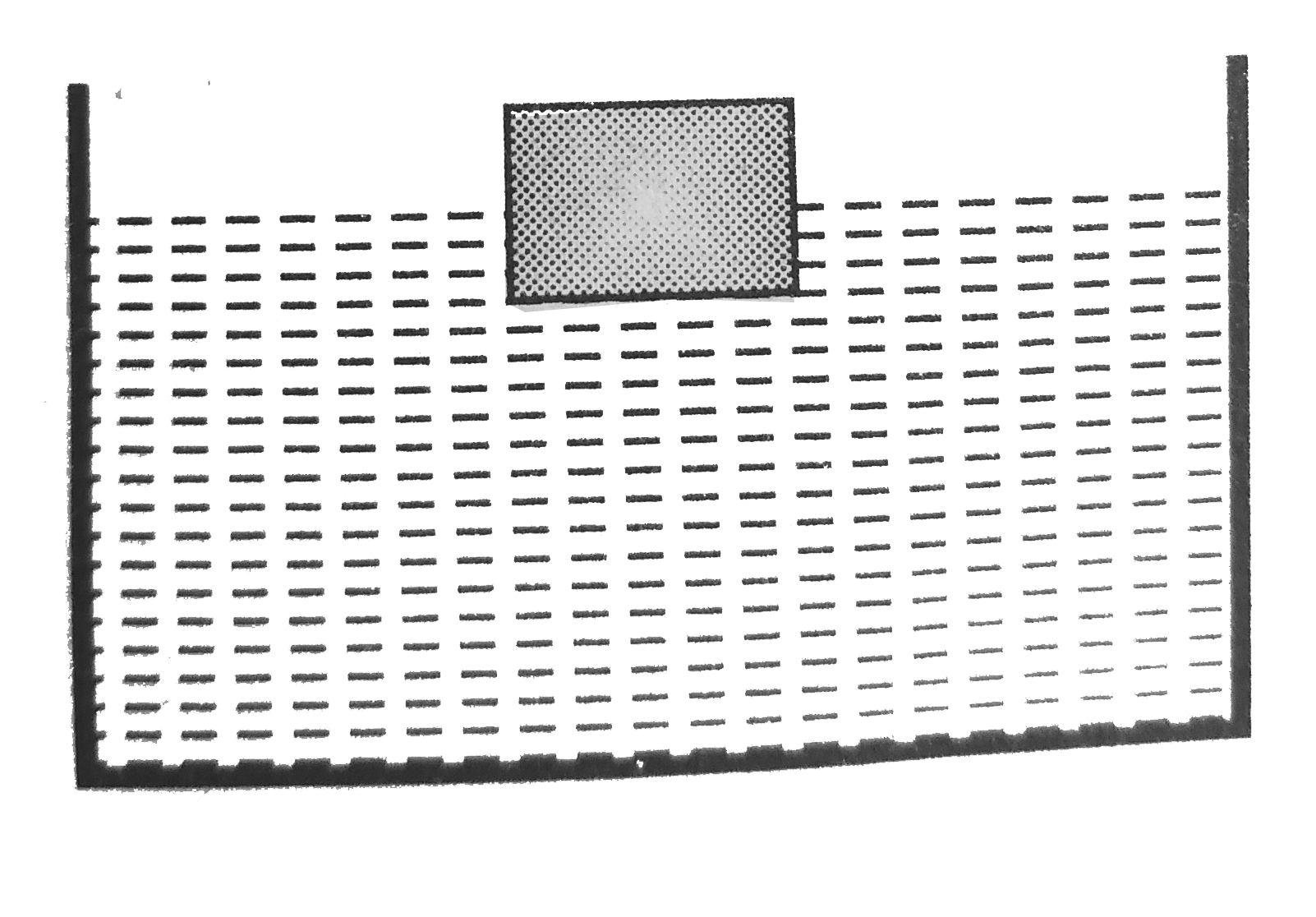A non-conducting body floats in a liquid at 20∘C. with 2/3 of its volume immersed in the liquid When liquid temperature is increased to 100∘C,3/4 of body volume is immersed in the liquid. Then the coefficient of real expansion of the liquid is... (neglecting the expansion of container of the liquid)
1.56×10−4/∘C
15.6×10−4/∘C
1.56×10−5/∘C
15.6×10−5/∘C
The correct Answer is:B
V1=2V/3,V2=3V/4,γ=V2−V1V1Δt
Topper's Solved these Questions
- BOOK - NARAYNACHAPTER - THERMAL PROPERTIES OF MATTEREXERCISE - LEVEL - V12videos
THERMAL PROPERTIES OF MATTER
- BOOK - NARAYNACHAPTER - THERMAL PROPERTIES OF MATTEREXERCISE - LEVEL - VI4videos
THERMAL PROPERTIES OF MATTER
- BOOK - NARAYNACHAPTER - THERMAL PROPERTIES OF MATTEREXERCISE - LEVEL-I (C.W.)23videos
THERMAL PROPERTIES OF MATTER
- BOOK - NARAYNACHAPTER - SYSTEM OF PARTICLES AND ROTATIONAL MOTION EXERCISE - EXERCISE - IV39videos
SYSTEM OF PARTICLES AND ROTATIONAL MOTION
- BOOK - NARAYNACHAPTER - THERMODYNAMICSEXERCISE - Exercise187videos
THERMODYNAMICS
Similar Questions
A non-conductiong body floats in a liquid at 25∘C with 1/3 of its volume immersed in the liquid. When liquid temperature is increased to 105∘C, 1/2 of body's volume is immersed is the liquid. Then, find the coefficient of real expansion of the liqquid (neglecting the expansion of container of the liquid) .
View SolutionDefine coefficient of apparent and real expansion of a liquid.
View Solution
Knowledge Check
- Question 1 - Select One
Assertion : The coefficient of real expansion of the liquid is independent of nature of container.
AIf both assertion and reason are true and reason is the correct explanation of assertionBIf the assertion and reason are true but reason is not the correct explanation of assertion.CIf assertion is true but reason is false.DIf both assertion and reason are false. - Question 2 - Select One
A wooden cylindrical block floats vertically with 70% of its volume immersed in a liquid at 0∘C . When temperature increases to 70∘C , the block sinks in the liquid. The coefficient of cubical expansion of liquid in K−1 is
A12.6×10−3K−1B61.2×10−3K−1C6.12×10−3K−1D6.00×10−3K−1 - Question 3 - Select One
A cubical block is floating in a liquid with half of its volume immersed in the liquid. When the whole system accelerates upwards with acceleration of g/3, the fraction of volume immersed in the liquid will be
 A12B38C23D34
A12B38C23D34
A solid floats in a liquid at 20∘C with 75 % of it immersed. When the liquid is heeated to 100∘C, the same solid floats with 80% of it immersed in the liquid. Calculate the coefficient of expansion of the liquid. Assume the volume of the solid to be constant.
View SolutionA cubical block is floating in a liquid with half of its volume immersed in the liquid.When the whole system accelerates upward with a net acceleration of g/2 the fraction of volume immersed in the liquid will become
View SolutionA cubical block is floating in a liquid with half of its volume immersed in the liquid.When the whole system accelerates upward with a net acceleration of g/2 the fraction of volume immersed in the liquid will become
View SolutionA block of density ρ floats in a liquid with its one third volume immersed. The density of the liquid is
View SolutionA cubical block is floating in a liquid with half of its volume immersed in the liquid. When the whole system accelerates upwards with a net acceleration of g/4, the fraction of volume immersed in the liquid will be
View Solution

